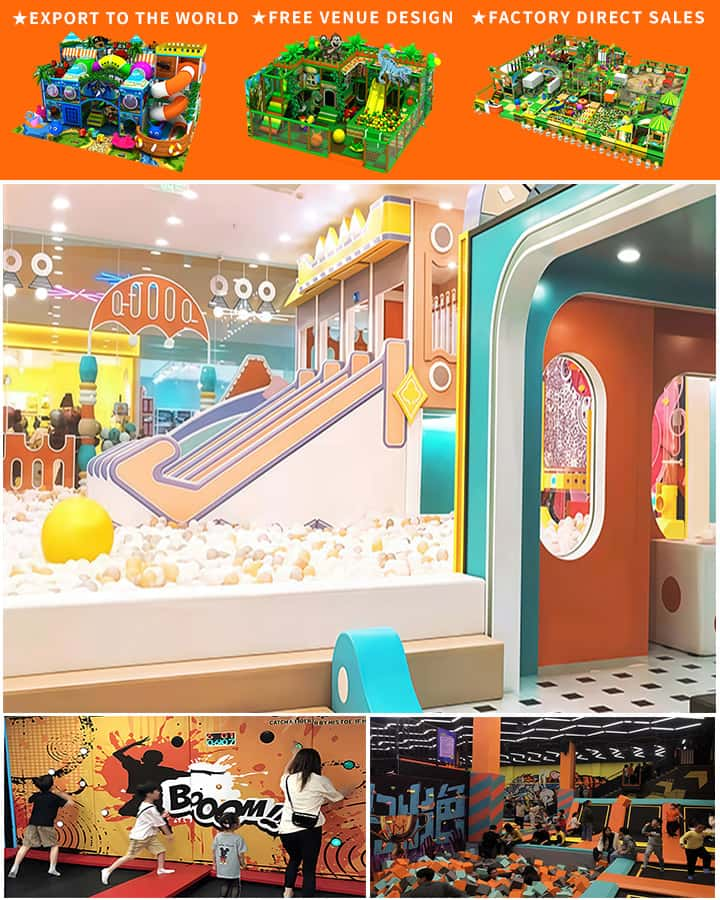Creating an engaging and safe indoor playground for children is a task that requires creativity, precision, and a deep understanding of child development. A well-designed indoor playground can offer endless hours of fun while also providing educational benefits and ample opportunities for physical activity. Here are some essential tips to help design an ultimate children’s indoor customized playground.
Safety First
The foundation of any playground design should be safety. Ensure that all equipment complies with local safety standards and regulations. Materials used should be non-toxic, and surfaces should have adequate cushioning to prevent injuries from falls. Safety gates and barriers should be installed around the playground area to keep younger children from wandering off.
Understanding Age Groups
Children of different ages have varying needs and capabilities. When designing an indoor playground, it’s crucial to cater to a specific age group or provide areas tailored to multiple age ranges. For toddlers, consider installing soft play areas with foam blocks and ball pits. Preschoolers might enjoy climbable structures and slide combinations, while older children could benefit from more challenging elements like rope bridges and climbing walls.
Educational Elements
Incorporating educational elements into the playground can make the experience enriching as well as entertaining. Consider adding interactive panels that teach letters, numbers, and shapes, or sensory walls that stimulate tactile exploration. Puzzle boards and memory games can also be integrated into the design, encouraging cognitive development in a playful manner.

Themed Play Areas
Themed play areas can capture a child’s imagination and make the playground more exciting. Popular themes include space adventures, pirate coves, fairy-tale castles, or jungle safaris. Decorating the playground with themed murals and using color schemes consistent with the theme can enhance the overall experience.
Flexible Furniture
Modular and flexible furniture allows for reconfiguration of the playground to suit various activities. Movable mats, adjustable shelves, and multi-purpose play structures can adapt to different games and activities, ensuring that the playground remains fresh and engaging over time.
Physical Activity Zones
Encourage physical activity by incorporating zones dedicated to active play. These could include areas for basketball hoops, trampolines, balance beams, or even a mini obstacle course. Physical activity is essential for healthy growth and development, and integrating these elements ensures that kids can expend energy in a safe environment.
Inclusive Play
An inclusive playground welcomes children of all abilities. Features such as wheelchair-accessible rides, sensory-rich areas, and equipment designed for diverse physical challenges ensure that every child can participate and enjoy the playground. Consultation with experts in child psychology and disability services can help create a truly inclusive environment.
Quiet Zones
Not all playtime needs to be noisy or high-energy. Designate quiet zones where children can relax, read, or engage in low-key activities like coloring or puzzle-solving. These areas provide a balanced experience and a retreat for those who may need a break from the more chaotic parts of the playground.
Parental Comfort
Parents are more likely to bring their children to a playground that caters to their comfort as well. Include seating areas for parents, perhaps with Wi-Fi access and charging stations. Transparent barriers or glass windows can allow parents to keep an eye on their children without being intrusive.
Maintenance and Cleanliness
Keeping the indoor playground clean and well-maintained is crucial for hygiene and safety. Use materials that are easy to clean and establish a regular maintenance schedule. Ensure that toys and equipment are sanitized regularly to prevent the spread of germs.
Designing a children’s indoor customized playground is a rewarding endeavor that combines safety, education, and fun. By considering the diverse needs and preferences of children, you can create a dynamic and engaging environment that offers countless hours of enjoyment and developmental benefits. Whether it’s through themed play areas, educational elements, or safe recreational zones, the ultimate goal is to craft a space where every child feels happy, challenged, and inspired.




